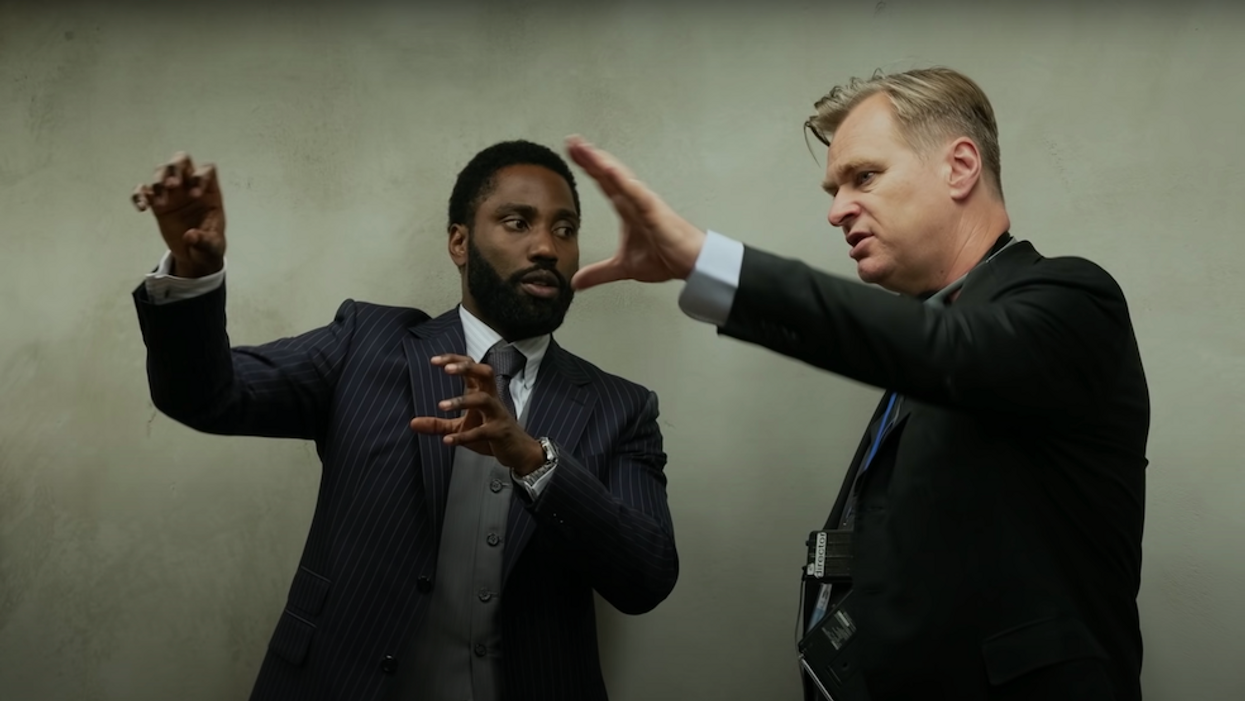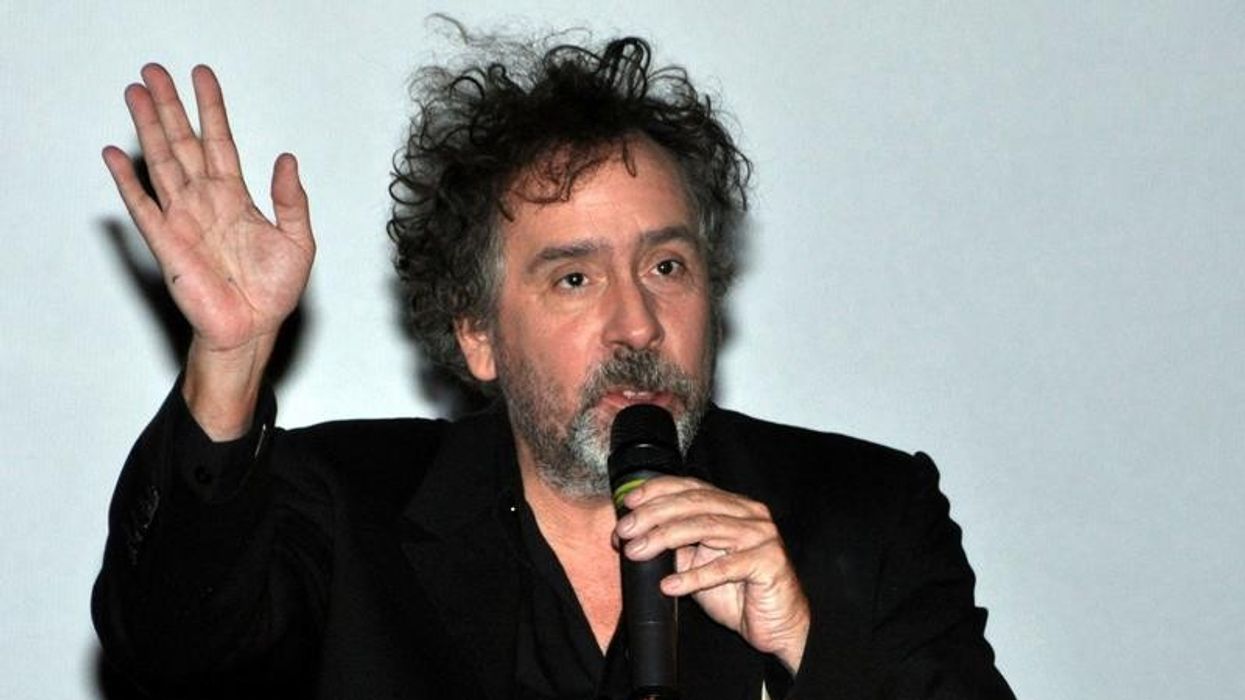Here's the Gear Hoyte van Hoytema Used to Shoot 'Tenet'
How do you put together one of the most visually complex movies of recent cinema?

The cinematography of Tenet, shot by Hoyte van Hoytema, is quite a masterpiece that not a lot of people seem to be discussing. Shockingly, the Oscars were not interested in even nominating the movie or the cinematography.
We think it’s a masterpiece, not because every shot is perfectly refined, but rather due to Hoytema’s hypersensitivity to maintain realism and being able to push the boundary of naturalistic lighting. The cinematography puts the viewers in a state of intense immersion that perfectly serves the story and momentum of Tenet.
With the lenses, lighting, and of course the infamous IMAX 70mm cameras, Hoytema was able to deliver extremely naturalistic and bold visuals that strictly served the story.
You can check out our video discussion here:
The cameras
Tenet has more IMAX footage than any other film in history.
They filmed with the Arriflex 765, IMAX MKIII, IMAX MKIV, IMAX MSM 9802, Panavision Panaflex System 65 Studio, and Logmar Magellan.
Although they filmed a lot of IMAX footage (and heavily marketed as such), most of the film was actually shot on the Arriflex 765 and Panavision 65.
Hoytema says, "IMAX cameras are noisy. When you want to record sound and dialogue, you have to work on a different format. So we shot IMAX whenever we could—and used the next best format, 65mm for dialogue. It was purely a practical decision."
It seems like almost every dialogue scene that they didn’t want to ADR is mostly shot with the other cameras, which turns out to be quite a significant portion of the movie. You can tell because the aspect ratio changes throughout the movie.
The glorious IMAX footage would have no black bars and would be in 1.43:1 aspect ratio. The dialogue scenes that are filmed on the Arriflex 765 would be in 2.20:1 aspect ratio (with the black bars). Most car scenes seem to be shot on IMAX, as well as all shots that needed ADR, which were shot on IMAX (dialogue scenes on a loud boat for example).

The film stock
The cameras match perfectly because they all used 65mm Kodak film stock. The film stock used on Tenet includes Kodak Vision3 50D, Kodak Vision3 250D 5207, Kodak Vision3 200T 5213, and Kodak Vision3 500T 5219.
Just to get a rough estimate of the cost of shooting an entire film on 65mm film, a 1000’ roll of 65mm Kodak film costs roughly $1,400.
For IMAX, the 65mm film stock passes horizontally through the IMAX camera at 15 perforations at a time. That would be around 337 feet per minute.
So you would burn $1,400 every three minutes.
In a conventional 65mm camera, the film passes vertically through the camera, at 5 perforations, around 111 feet per minute. So that would be nine minutes a roll, and the cost of IMAX is about three times as much film stock.
The “time inversion” sequences were often filmed twice, both forward and backward. So you can only imagine how many rolls of film that they used for this movie.

The lenses
The camera and lens package is a very similar setup to when they shot Dunkirk, it’s actually pretty much the same camera and lenses. They used converted Hasselblad still lenses to cover the full negative of 65mm film on IMAX.
Like Dunkirk, Tenet was shot entirely with spherical lenses.
Hoytema says: “Optically it is so much more pure than Anamorphic, with much less glass and light refraction between the subject and the emulsion. The original IMAX lenses are dark, so Dan Sasaki and his team customized these to achieve T2.0 and improve the brightness. They also tweaked the focus to enable us to push closer-in on more intimate situations.”
Their go-to lens was a custom-built Panavision Sphero 80mm prime lens. They also had a set of Hasselblad lenses they called the“micro-macro”in 50mm and 80mm, which let them magnify to a 1:1 ratio, for both inserts and some of the biggest close-ups ever seen in IMAX.
As with most Panavision lenses, they are less clinical and produce incredibly beautiful images. A moderate focus roll-off and blended layers of contrast allow the lenses to capture pleasing skin tones and a soft, classic overall look.

The lighting
The lighting is very naturalistic.
“We wanted reality, not beauty," Hoytema says. "We pretty much did away with continuity and the propensity to shoot in backlight—all of the things you are taught as best practice as a cinematographer. The aim was to take what was given: to use the natural, available light as much as possible, and to add as little extra light as possible.”
Hoytema is not afraid of showing you images that are not polished. The cinematography is entirely based in reality, and you can’t help but immerse yourself in the story. His lighting has always been about realism and naturalism, but with Tenet, we feel Hoytema has really mastered this. Many parts of the movie feel almost like a documentary, and just like when you’re watching a documentary, you rarely question where lights are coming from because you are purely focused on the story.
“I always have the ambition to use natural light because I love its richness, and it is something I can learn from," Hoytema says. "You always want to base your film reality on actual reality, but also deal with issues of consistency. I have recently warmed up to LED lighting, owing to the leaps made with color and control. Manipulating and controlling existing environments is a lot more doable, and without taking up much space or throwing in extremely big guns, which let us be much more flexible and able to tie into the light we find on location.”
Hoytema’s lighting style is very much about lighting the area and letting the actors be free. The location, the light, the look is what it is. He really doesn’t like to bring in lights close to the sets as he finds it limiting and unnatural. When moving in for coverage and close-ups, most cinematographers will naturally bring their lights in closer to have a more pleasing and softer light on subjects.
Hoytema does none of that. Even on close-ups, you can see that the lights likely did not move from the wides. You can tell by the shadows. This would give Christopher Nolan a significant amount of extra time to film as well. Although his main intention is likely to maintain that realism rather than to save time.
“I was lighting for the scene rather than just the shot," Hoytema says. "We will make adjustments for a given shot, but in achieving a fluid, visceral IMAX experience, it’s about capturing immense levels of nuance. Your approach is to be pure. If you light a whole scene, you figure out where the light would be coming from. But for me, it’s not ever a macro approach about shadows and such. I try to keep my light sources far from the epicenter of the set unless it is an on-camera practical. Aesthetically, I believe this gives me a controlled richness that works for the story.”
He is also not afraid of shooting in midday with harsh sunlight, which most cinematographers avoid. He boldly captures the atmosphere of the midday sun and embraces what it does to shadows on faces, rather than softening it off.
What did you think of the cinematography when watching Tenet? Let us know what you think in the comments below.











